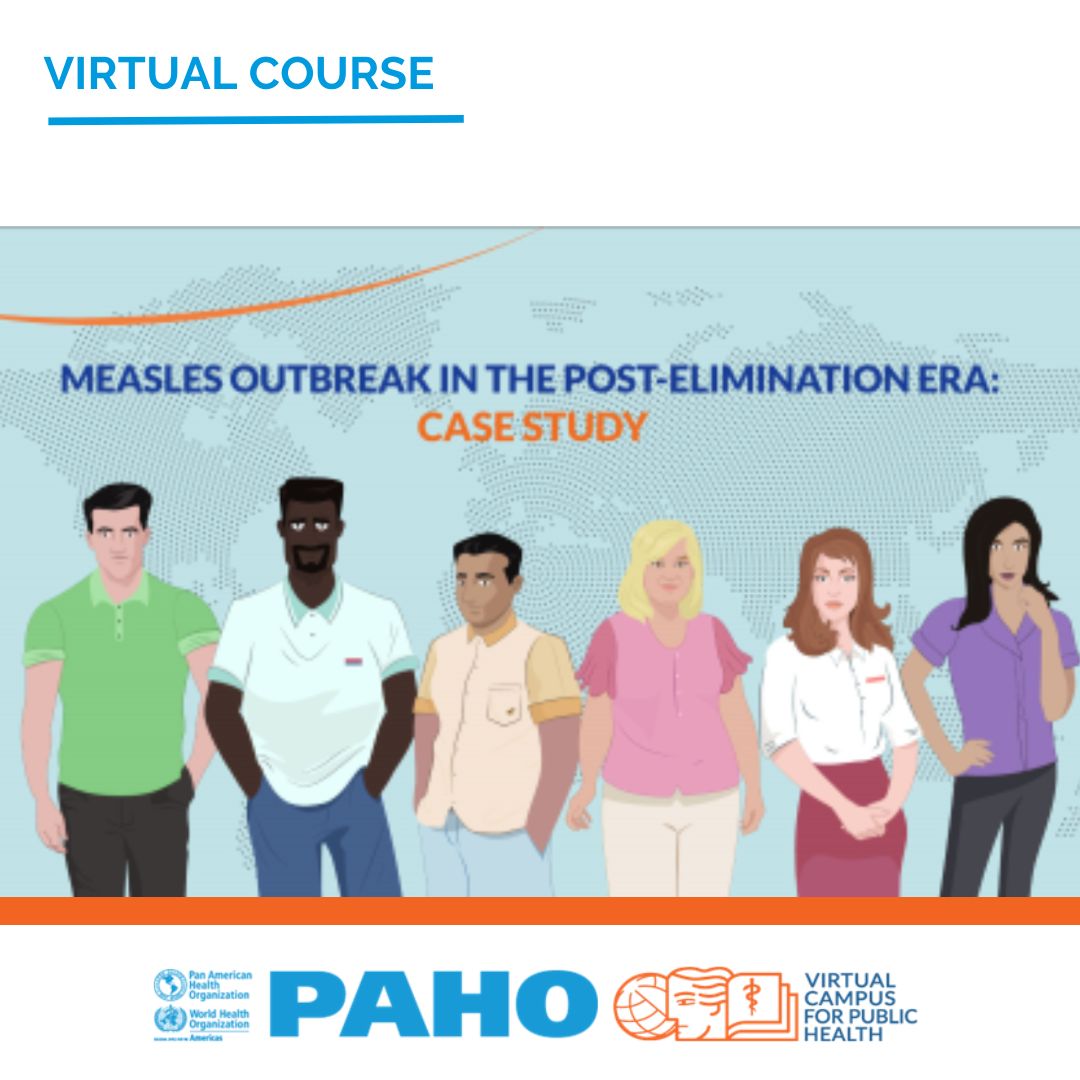
VERSIÓN ESPAÑOL ENGLISH VERSION
Given the ongoing risks of importation and reintroduction of the measles and rubella viruses faced by the countries of the Region, the Pan American Health Organization (PAHO) and the World Health Organization (WHO) are seeking to reinforce the knowledge, attitudes, and practices of health workers as one of the key strategies to protect the hard-earned elimination gains. As such, PAHO and WHO are offering this training to their Member States, which is based on the true events of a measles outbreak that has been adapted and developed for educational purposes.
Didactic Strategies
Didactic resources and virtual platform tools are used to boost the learning experience from a practical perspective via interactive activities that allow users to advance through successive modules.
Purpose of the Course
This course seeks to strengthen the national and subnational capabilities for the organization and implementation of a rapid response to a measles outbreak in the post-elimination era, in order to interrupt the circulation of the virus as fast as possible. The goal is to transfer updated knowledge to health workers and thus support the efforts led by countries to maintain their progress in virus elimination. The on-line availability of this training facilitates and expands access to this new updated knowledge for the new cohorts of health workers seeking training on a fast and timely response to measles or rubella outbreaks.
Learning Objectives
Main Objective
- Strengthen the capabilities of health teams at the national and subnational levels to provide a rapid response to imported cases of measles and rubella.
Specific Objectives
- Identify and apply procedures and methods for the timely notification and epidemiological field investigation of measles or rubella outbreaks.
- Identify and apply response measures to measles or rubella outbreaks.
- Interpret laboratory test results to confirm cases of measles or rubella.
- Understand and implement the criteria to verify the interruption of measles or rubella outbreaks.
Intended Audience
Health workers from the national, subnational and local levels involved in the rapid response to measles outbreaks from the following technical areas: immunization, epidemiology and laboratory.
Clinical and laboratory staff conducting immunization and epidemiological surveillance activities regarding measles and rubella.
Length of the Course
This course is open and available at the Virtual Campus for Public Health (VCPH). Since this is a self-paced e-learning program, users can choose when to take each module and how much time to dedicate. The estimated time to complete all the modules and the final assessment is about 10 hours.
Capabilities Developed in the Course
This course provides opportunities to develop capabilities related to the management and shared use of information and documents on immunization, and the implementation of a rigorous, collaborative, and adaptable perspective for decision-making in different areas in order to reach the coverage goals of immunization programs.
